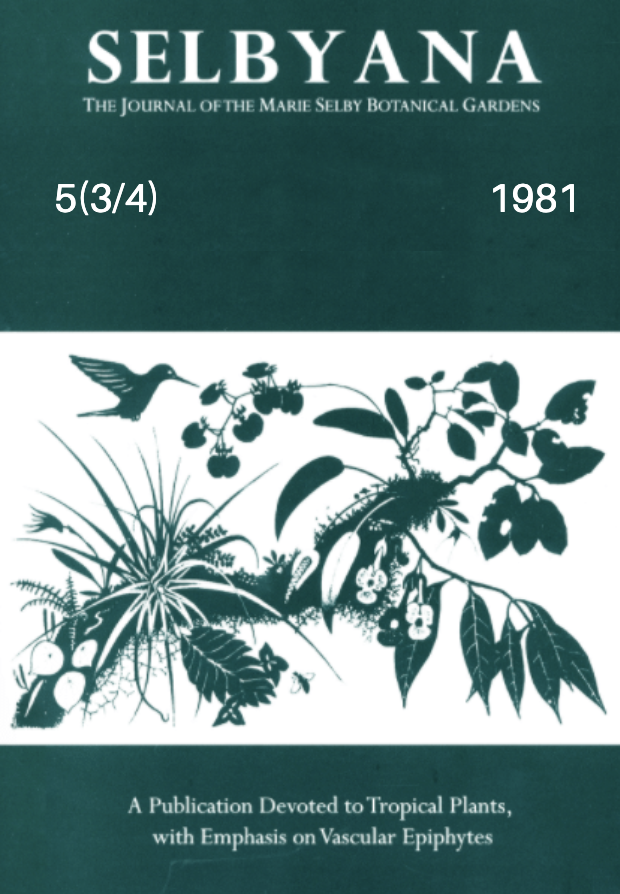Abstract
During the past several years the floral fragrance components of several genera of orchids have been identified (Hills, Williams & Dodson, 1968, 1972). In most ofthe genera in which floral fragrance components have been identified, the floral fragrance components have been important in the attraction of pollinators (Dodson & Hills, 1966; Hills, 1968; Hills, Williams & Dodson, 1968, 1972; Dodson et al., 1969; Dodson, 1970; Williams & Dodson, 1972), especially in the attraction of male euglossine bees to various species of orchid flowers as pollinators. Brassavola, however, is not pollinated by male euglossine bees, but possesses the syndrome associated with moth pollination in the Orchidaceae: 1) odor production at night, 2) weakly zygomorphic flowers, 3)landingplace curved backwards orturnedupwards, 4) color white, cream or often greenish, 5) odor heavy-sweet, very strong, not fruity, 6) abundant nectar deeply hidden in narrow tubes, 7) colored nectar guides absept, 8) position of the flower rarely erect, usually horizontal or hanging (modified from van der Pijl & Dodson, 1966). Unfortunately, detailed observations on moth pollination in the group are scanty, being limited to one report by van der Pijl & Dodson (1966) of sphingid pollination in B. digbyana and a personal communication (from N. G. Smith) of moth pollination of Brassavola nodosa in Panama.
Open Access and Copyright Notice
Selbyana is committed to real and immediate open access for academic work. All of Selbyana's articles and reviews are free to access immediately upon publication. There are no author charges (APCs) prior to publication, and no charges for readers to download articles and reviews for their own scholarly use. To facilitate this, Selbyana depends on the financial backing of the Marie Selby Botanical Gardens, the hard work and dedication of its editorial team and advisory board, and the continuing support of its network of peer reviewers and partner institutions.
Authors are free to choose which open license they would like to use for their work. Our default license is the Creative Commons Attribution-NonCommercial 4.0 (CC BY-NC 4.0). While Selbyana’s articles can be copied by anyone for noncommercial purposes if proper credit is given, all materials are published under an open-access license with authors retaining full and permanent ownership of their work. The author grants Selbyana a perpetual, non-exclusive right to publish the work and to include it in other aggregations and indexes to achieve broader impact and visibility.
Authors are responsible for and required to ascertain that they are in possession of image rights for any and all photographs, illustrations, and figures included in their work or to obtain publication or reproduction rights from the rights holders. Contents of the journal will be registered with the Directory of Open Access Journals and similar repositories. Authors are encouraged to store their work elsewhere, for instance in institutional repositories or personal websites, including commercial sites such as academia.edu, to increase circulation (see The Effects of Open Access).
